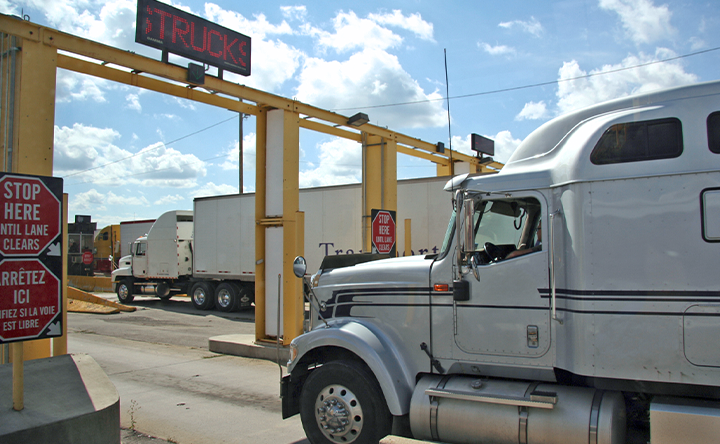Blog /
National Supply Chain Task Force needs to set clear priorities to support economic growth
National Supply Chain Task Force needs to set clear priorities to support economic growth
By Robin Guy Canada is a trading nation. Never more have Canadians understood what this means than these past two...

By Robin Guy
Canada is a trading nation. Never more have Canadians understood what this means than these past two years, as the words “supply chain” became a new staple at the dinner table. From the global pandemic, to the wild fires and flooding in BC, to physical disruptions due to blockades and strikes, the transportation system has suffered severe disruptions beyond its limits– both preventable and unavoidable. Canadians expect our elected officials to work with business to ensure the preventable doesn’t hinder growth.
In Canada, our trade infrastructure matters more than for many other countries given the relative importance of trade for our economy. With roughly two-thirds of our GDP value in trade activity, this is higher than the OECD average of 56%. In the most recent Canadian Survey on Business Conditions, supply chain issues remain a key obstacle to growth, with businesses expecting these challenges to persist well into next year. Additionally, our supply chains must be reliable to attract investments. The competitiveness of Canadian businesses and Canada’s reputation in international markets depends on reliable transportation infrastructure that allows goods to be transported in a timely manner.
Earlier this year, the government announced a National Supply Chain Task Force to better understand our supply chain complexities and recommend ways to improve both the domestic and international linkages of our transportation system. The Task Force is to report to government within 100 days, which is fast approaching. As the Task Force finalizes its interim report, the business community is looking for a partner to address the preventable items hindering our transportation systems.
Firstly, the government must commit to a long-term infrastructure program that will support economic growth.
Canada has a serious infrastructure deficit, which will require us to triage priorities. It is essential that we avoid the temptation to spread whatever money is available thinly across Canada. Government needs to work with business to set clear priorities on infrastructure projects that will bring forward measurable economic returns.
Canada needs to ensure we can move cargo in all modes of transportation reliably and sustainably. Without serious investment in this area, we risk hindering Canada’s economic growth, competitiveness and international reputation, as we fall into being an unreliable partner for business.
There is a need for funding for projects that support redundancy in critical infrastructure to reduce risk of critical failures to supply chains (e.g. pipelines, bridges, railroads, marine ports and airports). Some of these investments include investing in projects that will expand rail in highly congested areas; increasing bridge capacity; and increasing industrial lands around airports and ports to sustain trade growth.
The Government’s National Trade Corridors Fund is a positive step forward. While it is supporting worthwhile projects in the key areas above, the government must work to increase the speed at which projects receive funding. Too often, projects are stalled due to government inefficiencies. It must work with business on ensuring transparency for projects and by continuing to demonstrate how funding is helping address supply chain challenges of both today and tomorrow.
Secondly, the government must adopt a formal vision for our trade corridors.
While the NTCF is a key pillar, the government currently lacks an overall vision for our trade corridors. The government must look to work with business to develop new gateway strategies, including for the Western, St. Lawrence and Arctic Gateways, that will better guide which projects are “shovel worthy”. These strategies should be guided by a vision that promotes economic growth through the collaboration and business stakeholders, such as port authorities, shippers, industries and key associations. These strategies will also set the tone for investments across all levels of government and the private sector.
Lastly, the government must address the labour shortage.
Ensuring Canadian businesses have the appropriate human skills will be essential. We have a million unfilled jobs in Canada right now. Addressing that will require people with the skills needed to fill supply chain gaps.
Canada has labour shortages in a number of key sectors, such as trucking that will become more urgent as the last of the baby-boomers retire. The federal government must collaborate more closely with provincial, territorial and municipal governments, and with the private sector, including businesses and chambers of commerce to better understand labour market needs across the country. This partnership should also include a dialogue on an inclusive workforce strategy that engages all segments of the population.
The Government’s Atlantic Immigration Program has been successful at helping attract skilled newcomers to address the labour shortage and drive economic growth. The government should look to scale up these successes when possible.
With these three priority areas taken together, the federal government and its National Supply Chain Task Force can ensure Canada’s most pressing supply chain issues are addressed. Prioritizing infrastructure that enables trade and economic growth need to be top of mind.
—
Robin Guy is the Canadian Chamber’s Senior Director, Transportation, Infrastructure & Regulatory Policy
Other Blogs

Policy Matters: What Does the U.S. Have to Do with Canada’s Manufacturing Sector?

Why Mining Companies Have Become More Sustainable and Inclusive to Stay Relevant




